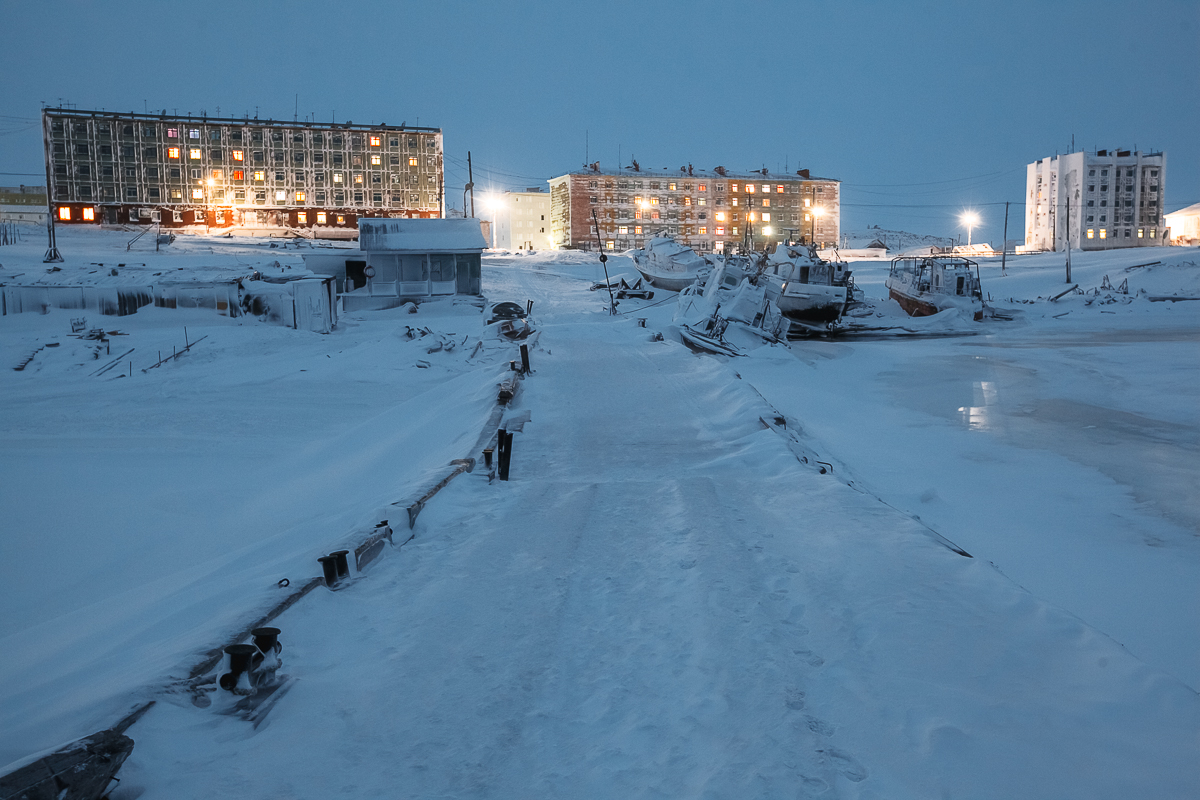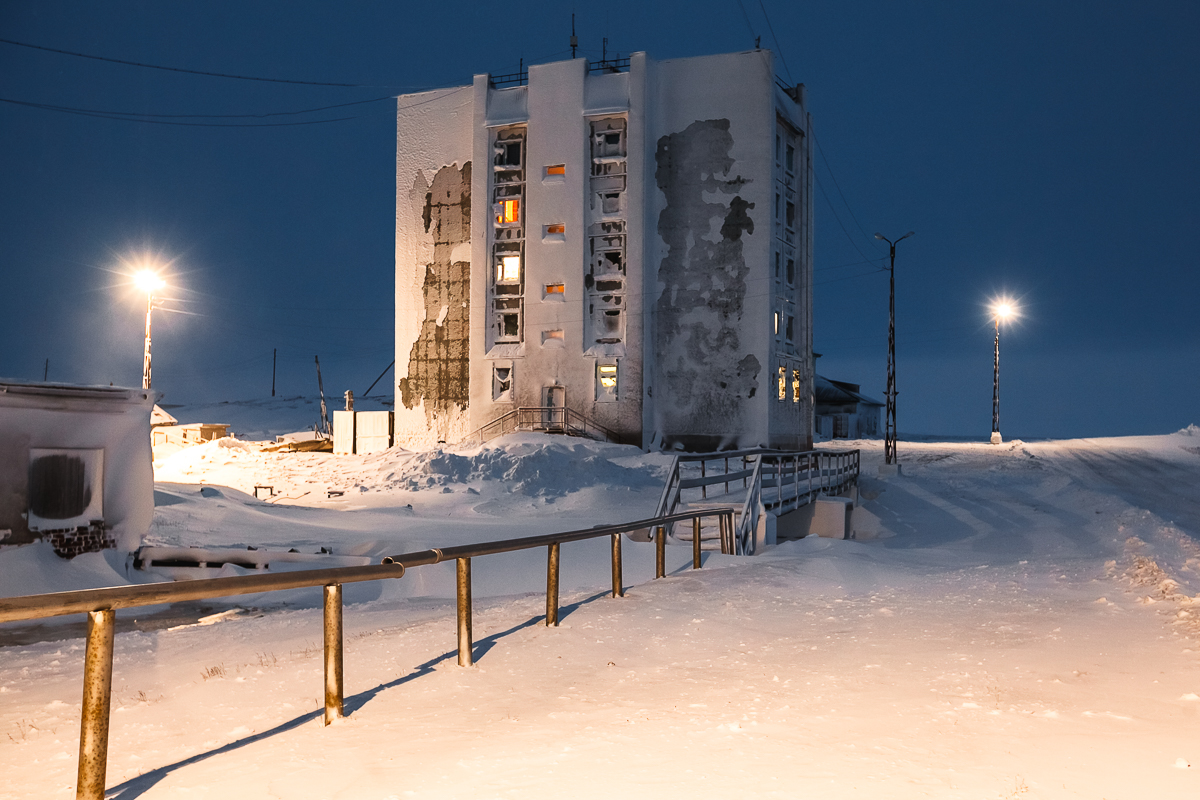Travel in the Russian Arctic: A polar diary

Slice of everyday life in Dikson in Russian Arctic.
Anton PetrovDikson, Russian Arctic
Day 1
Our taxi raced from Norilsk to the Alykel Airport across the lethargic December tundra. However, we could barely make out the tundra or the small towns we passed along the way; the Arctic Region had been swallowed by the polar night. All we could see was fleeting snowdrifts clinging to the road in the flickering beam of headlights.
Our plane to Dikson was delayed for a day due to "unfavourable weather conditions."

Photo credit: Anton Petrov
"We've been waiting for a plane for a fortnight already,” said a woman at the check-in counter. “Some have stayed at their relatives', and some have gone to hotels. But the blizzard will fade away, you just need to be patient."
It was then that we noticed people from Dikson at the airport. The major difference between them and the "mainland" folks was a Nordic serenity and extraordinary patience: for the sun, for the fish to spawn, for food to be brought to the shops or for a plane.
Day 2
Dikson is a small town located in the north of Krasnoyarsk, on the shores of the Kara Sea. Compared to its neighbour Norilsk, Dikson is a tiny settlement, with a population of just over 600 people.
It is a truly extreme destination. The signature tourist attractions of Dikson include winter temperatures fluctuating around -30°C (-22°F), 2G internet connections, austere stilt houses, ubiquitous off-road vehicles and the morose ice-clad sea bordering the tundra wilderness, which is uninhabited even by indigenous peoples, and not passable on any transport except the weekly plane. However, during Soviet times, it claimed to be the "capital of the Arctic."
 Source: Anton Petrov
Source: Anton Petrov
Mikhail and Zinaida Degtyarev, a couple engaged in fishing and hunting, moved to Dikson from Belarus during the golden age of Dikson, to work at a local fish factory. Mikhail says he and his spouse "have been roaming the tundra for 53 years."
From the 1960s to the 1980s, this part of the Arctic was densely inhabited by winter residents who engaged in state-regulated activities including hunting mink and ringed seals and fishing. The Degtyarevs have a winter camp where they spend most of their time. They occasionally visit the settlement. But after the Soviet Union collapsed, Mikhail and Zinaida had to turn to private entrepreneurship, and now they are among the few residents of Dikson who still fish for a living: they catch valuable types of fish, such as broad whitefish, vendace, muksun, nelma and Arctic cisco, and send it across to the "mainland."
Day 3
"Are you sure you want to go? No one is going to walk you around the island, it's a completely wild terrain and there may even be some polar bears out there," were the words of welcome spoken to me by officials of the local administration. But we were quite sure of what we wanted, so we put on our balaclavas, felt boots and fleece gloves, and jumped into an off-roader.

Source: Anton Petrov
Dikson is an island settlement. In the Soviet era, it had horses, a cow shed, a cinema, a video rental shop, a restaurant, a bakery and a number of other facilities. When newcomers arrived they would have to stand in line for a room at a state-owned residence. Today the island is almost barren, resembling a Hollywood movie set for an epic thriller in the Arctic. The only illuminated and manned facilities are the small weather station and the tiny airport, which functions once a week at the most, when the weather cooperates. There are many abandoned buildings.
Dikson Island resembles a ghost town with boarded windows, snowed-in doorways and dormant old cars beneath the snow. To have a better look at the sleeping island, we took our flashlights, but they weren't very useful.
On Dikson Island you come to realize what a polar night really is. It's not the bluish twilight you see a bit further south in Norilsk or Dudinka. It is pitch-black, the colour of ink. Your eyes can't see the horizon, not even a distant silhouette, your brain doesn't understand whether it is time to wake up or go to sleep, and your body physically feels the proximity of the North Pole.

Source: Anton Petrov
It appears that you are in the point of space where all the parallels and meridians converge and the familiar lapse of time comes to an end.
You can read the full report on Dikson and its residents at the"Siberia: Joining the Dots"
All rights reserved by Rossiyskaya Gazeta.
Subscribe
to our newsletter!
Get the week's best stories straight to your inbox